YEMEN

➡️️ YEMEN CIVIL WAR – The Largest Humanitarian Crisis in History
The conflict in Yemen, ongoing since 2014, has become one of the world's most severe humanitarian crises. It began when Houthi rebels, a Shia minority group, took control of the capital, Sanaa, and ousted the government.
Military intervention by a Saudi-led coalition aimed to restore the internationally recognised government. The conflict between the two has resulted in widespread devastation, with thousands of civilian casualties and millions displaced.
The situation is further complicated by regional power struggles, economic collapse, and a severe famine, leaving much of the population in dire need of aid.
Jump straight to our resources on ➡️ Yemen
Explore our comprehensive guides on -
-
Timeline of the Conflict
-
The Resulting Humanitarian Catastrophe
-
Houthi Red Sea Attacks
-
Nobel Prize Wimming Yemeni Journalist Tawakkol Karman
More than 10 years of war have left roughly 4.5 million people (14% of the population) displaced. There are 18.2 million people in dire need of humanitarian assistance, and 5 million people are living with food insecurity. There is an increasingly high risk of large-scale famine.

Timeline of the Conflict in Yemen
Since 2004, the Houthi movement has been leading an insurgency known as Ansar Allah against the military in Yemen, protesting the marginalisation of Shia Muslims in the north.
The 2011 Arab Spring protests pressured Yemen's President Saleh to hand over governance to Abdrabbuh Mansour Hadi. This transition was not smooth, and in 2014, tensions between the Houthis and forces from Hadi's government escalated into civil war.
By the end of 2014, Houthi forces had seized Yemen's capital city, Sanaa. President Abd Rabbu Mansour Hadi and his government were forced to resign, and in early 2015, Hadi fled Yemen.
Saudi Arabia led a coalition of Arab states in an attempt to restore power to the Yemeni government. As part of this, they implemented a blockade to prevent the smuggling of weapons headed to the Houthis from Iran. This economic and military campaign was brutal. It was controversially supported by weapons from the UK and the U.S. It resulted in further military escalation in a regional proxy struggle stemming from the broader Sunni-Shia dispute.
Years of attempts at forming governments have all failed, and fighting has persisted in the strategic cities of Sanaa, Hodeidah, Marib, and Taiz.
In 2021, former U.S. President Joe Biden lifted the U.S. terrorist designation placed on the Houthis and ended their support for offensive operations. This was an attempt to improve the humanitarian situation in Yemen by removing obstacles to the flow of aid into the country. The designation was later reinstated in 2024 after a series of attacks on ships in the Red Sea.
The militarisation of Yemen's waters has resulted in a complex crisis worsened by Israel's war on Gaza. In November 2023, the Houthis declared war on Israel and hijacked a commercial ship in the Red Sea. They have since attacked at least 60 other ships as of late March 2024, causing massive disruption to global trade as major shipping companies are unable to use the passage. With almost 15% of global maritime trade using this route, diversions have resulted in greater shipping costs, huge delays, and higher levels of emissions.
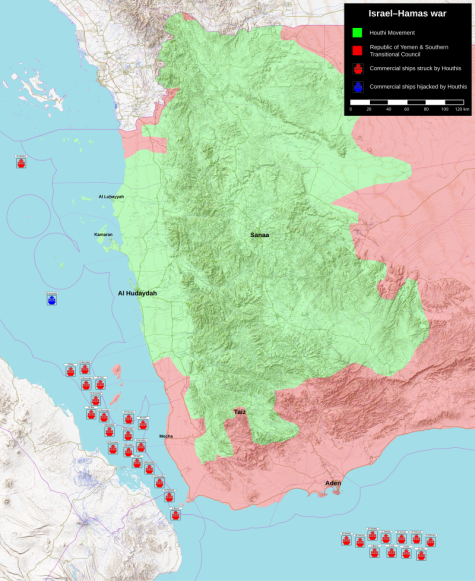
In an attempt to push the Houthis back north, Saudi Arabia and the UAE carried out a relentless and indiscriminatory air campaign, killing more than 150,000 civilians. Many more have lost their lives due to the resulting humanitarian crisis.
The Houthis have threatened to escalate their attacks on Red Sea shipping if the war against Gaza and the siege of Palestinian people persists. Following the Houthis attack on Israel itself, Israel responded with major attacks on the Hodeidah port, a major entry point for humanitarian aid.
Humanitarian Crisis in Yemen
With the country's main port under attack and a Saudi-enforced siege blocking the movement of goods, the people of Yemen have been left without supplies of essential food, medicine, and aid. The complete destruction of this port would be catastrophic.
With 6.7 million people in need of shelter assistance, the majority of displaced families live in informal settlements where they are exposed to extreme weather and lack privacy, safety, employment, education, and sanitation. Many families are crowded into single shelters.
Most displaced people in Yemen have been away from home for more than 2 years, with many displaced two or more times. These people are exhausted and highly vulnerable.
Approximately 80% of displaced people are women and children. As such, women's rights have suffered enormously. The Yemeni government, the STC, and the Houthis have barred women from travelling without the guardianship of a male. Repression of civil society in general has deepened.
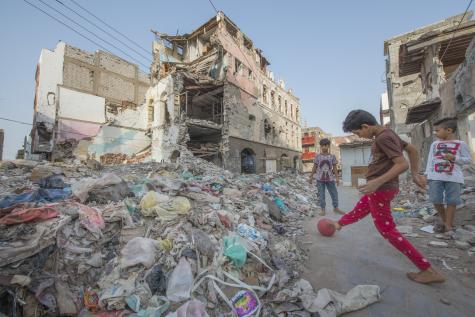
Currently, 9.8 million children in Yemen are in desperate need of humanitarian assistance. Attacks on hospitals and schools from all sides have caused severe disruptions to health services and children's education. Attacks on food infrastructure and the weaponisation of water have had particularly harmful impacts on children. Air attacks amounting to war crimes have purposely and repeatedly targeted civilian infrastructure and gatherings.
The Red Sea Crisis has dramatically impacted humanitarian efforts as supplies are simply unable to enter the country. The Houthi forces have interfered and obstructed aid, delayed approval of aid projects, blocked aid assessments, and attempted to divert aid to loyalists. The Yemeni government has also impeded aid efforts by implementing complex bureaucracy and legislation for aid agencies, delaying and preventing their vital work.
All sides are guilty of arbitrary arrest and detention, forcible disappearances, torture, and inhumane treatment of detainees. There has been virtually no accountability for violations committed by parties to the conflict.
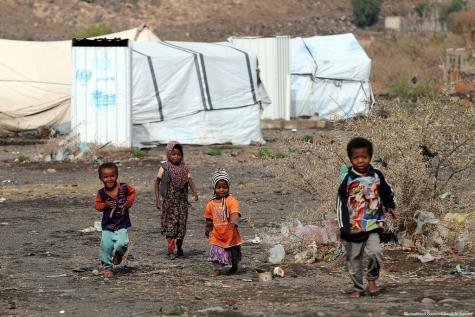
Economic Crisis in Yemen
An ongoing economic crisis is exacerbating the dire humanitarian situation. In 2019, the civil war splintered the economy into two economic zones, one controlled by the Houthis and the other by the Saudi-led government. Spiralling inflation meant that by 2021, Yemen's currency, the Rial, had depreciated sharply, especially in government-controlled areas.
Citizen purchasing power has reduced so much that even basic necessities are unaffordable. With the majority of the population now relying on dwindling humanitarian aid, food insecurity and poverty levels have soared.
A decade of destruction and political instability have devastated infrastructure, disrupted trade, and crippled essential services, leaving the nation in a state of both humanitarian and economic emergency. The lack of unified governance makes coherent economic policies and foreign investment impossible. Years of widespread mass protests in southern Yemen have been met with brute force by security forces.
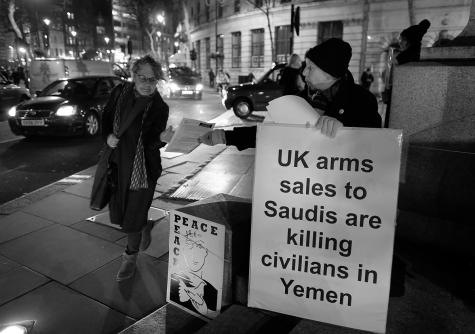
U.S. & UK Involvement in Yemen
Both the UK and the U.S. have been supplying the Saudi-led intervention in Yemen with arms and technical assistance, making them complicit in the deaths of thousands of innocent Yemeni civilians. In January 2024, both countries began air strikes on Houthi targets and became further embroiled in the conflict.
Biden claimed the strikes were in response to the Houthi attacks on Red Sea ships and Israel. With Donald Trump as President, U.S. military involvement has been stepped up in an attempt to pressure Iran into complying with a new deal on its nuclear weapons programme.
It is also suspected that they are using the conflict to conduct counterterrorism operations targeting al-Qaeda and other militants associated with the self-proclaimed Islamic State within Yemen – AQAP.
Since 2002, the U.S. has carried out nearly 400 strikes in Yemen. In March 2025, they launched a new campaign of air and naval strikes against Houthi targets in Yemen. Saudi Arabia is not involved in the U.S.-led attacks and has publicly asked them to show restraint when responding to Houthi attacks.
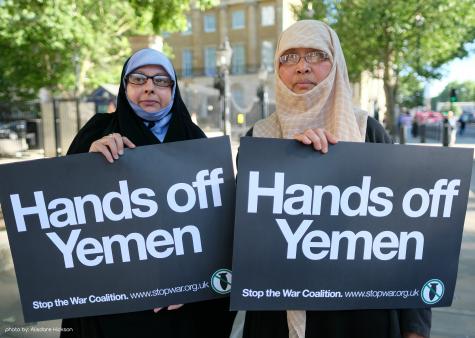
Attempts at Peace in Yemen
Yemen has experienced periods of ceasefire, but its success over the years has been mixed. Since the offensives of 2015-16, there has been a political stalemate and many failed ceasefires.
-
2011: Gulf Cooperation Council Initiative (GCC)
The GCC proposed a political transition plan which included the resignation of then-President Ali Abdullah Saleh in exchange for immunity from prosecution. It was a crucial attempt at stabilising the region and initiating democratic reform. The agreement laid the groundwork for a new government, ultimately leading to the election of Abdrabbuh Mansur Hadi as the interim president.
The deal, however, failed to deliver comprehensive reform and excluded key stakeholders such as the Houthis and southern secessionists, ultimately leading to widespread dissatisfaction and further fighting.
-
2013-2014: National Dialogue Conference
This conference was a transitional dialogue process held in Sanaa, which aimed to address the political, social, and economic issues plaguing Yemen.
Despite some progress, it failed to resolve key disputes. Many of the outcomes were non-binding, and delegates were unable to bridge Yemen's various political factions. Again, the Houthis and Southern separatists were not involved, and as such, their demands were left unmet.
-
2015: UN-Brokered Peace Talks
In response to the escalating conflict, the United Nations facilitated peace talks in Geneva, which included the Yemeni government, the Houthi rebels, and various other factions involved in the conflict.
Deep-seated mistrust and ongoing hostilities between the parties made progress difficult, with both sides struggling to find common ground. The talks did not result in a lasting ceasefire.
-
2016: Kuwait Peace Talks
Months of prolonged negotiations in Kuwait served only to cement the irreconcilable differences between the parties.
The Houthis were unwilling to cede control of the capital without assurances of a political role. At the same time, the Yemeni government insisted on the withdrawal of Houthi forces as a precondition for any agreement. The involvement of Saudi Arabia and Iran further complicated the peace efforts.
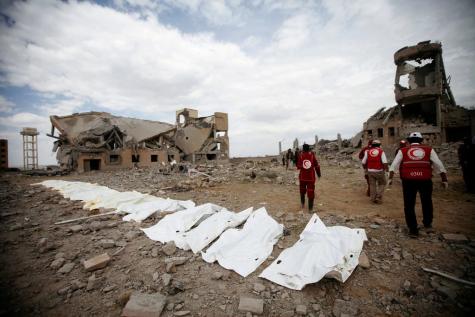
-
2018: Stockholm Agreement
Mediated by the UN, the agreement between the Yemeni government and Houthi rebels focused on three main areas: a ceasefire in the port city of Hodeidah, a prisoner exchange, and addressing the situation in Taiz.
The agreement marked a significant step toward peace, however, with both parties accusing each other of violations, the agreement was not long-lasting.
-
2019: Riyadh Agreement
Brokered by Saudi Arabia, the agreement sought to unify forces against the Houthi insurgency by integrating the Southern Transitional Council into the government and redistributing power. It included the formation of a new, inclusive cabinet, the redeployment of military forces, and consolidating security under the state's control.
A lack of consistent enforcement, the continued presence of external influences, and competing regional interests led to the failure of the agreement as the various factions ultimately sought to advance their own agendas.
-
2020: Ceasefire Proposals
In light of the Covid-19 pandemic, 2020 saw multiple attempts to establish a ceasefire. The UN and other international bodies worked tirelessly to broker peace agreements.
The Saudi coalition announced a unilateral ceasefire, hoping to reduce hostilities and focus on combating the pandemic. The ceasefire proposals, however, were seen as temporary measures and did not address the underlying issues driving the conflict - power-sharing and political representation.
There was no comprehensive peace plan, so the temporary agreements were fragile and prone to collapse. Persistent military operations hindered any chance of lasting peace.
-
2022: Truce and Renewed Talks
A nationwide truce was declared in April 2022, which significantly reduced violence and renewed the path for peace talks and negotiations. This breakthrough allowed for the reopening of key ports and airports, allowing much-needed aid to enter the country.
Both sides were willing to engage in dialogue, and civilians were optimistic that this would lead to a more permanent resolution. The truce, however, was marred by continued skirmishes and violations, which undermined confidence. The absence of a neutral mediator also meant that both sides were reluctant to make significant compromises without guarantees of reciprocation from the other side.
-
2023: Continued Negotiations
Efforts have persisted to extend the truce and reach a comprehensive peace agreement, including a permanent ceasefire, addressing humanitarian concerns, prisoner exchanges, reopening humanitarian aid routes, stabilising the economy, and post-conflict reconstruction.
The situation, however, remains complex and fluid. With increasing involvement from the U.S. and Israel, international intervention is making chances of peace even more unlikely. As of May 2025, a new ceasefire between the U.S. and the Houthis was brokered by Oman. The Houthis have agreed to halt their attacks on vessels in the Red Sea but not on Israel.
In a recent UN meeting, delegates warned that Yemen still has a long way to go before a lasting resolution is in place.
"While the frontlines may currently appear relatively stable, what Yemen has now is not peace," - Hans Grundberg, Special Envoy of the Secretary-General for Yemen
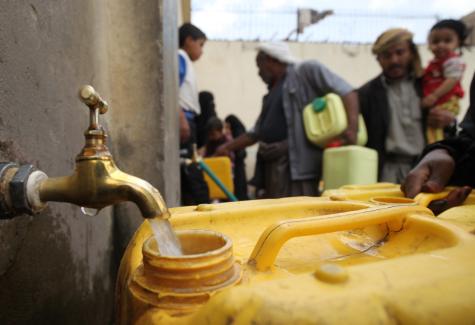
Humanitarian aid continues to be a priority, along with building an inclusive government, supporting dialogue, representation for Yemen's diverse population, rebuilding infrastructure and the country's main airport and port. The countries currency continues to deteriorate, aid deliveries are unable to reach their destinations, a cholera epidemic is sweeping the nation, and prolonged power outages are crippling the country.
Much work is still needed as Yemen's 2025 humanitarian response plan is barely 9% funded as the country clings onto hope of yet another fragile ceasefire.
Better World Info is an open platform – We invite experts, NGO's, campaigners, and activists to contribute their knowledge and top resources! We are a constantly expanding, work-in-progress, committed to spreading reliable, critical, and investigative resources to help create an informed, knowledgeable, and curious world.
Author: Rachael Mellor, 20.05.25 licensed under CC BY-SA 4.0
For further reading on Yemen see below ⬇️
Info on YEMEN
- General Info on Yemen[40]
- Timeline of Conflict[39]
- Houthi Coup, Civil War & Military Intervention[78]
- Saudi Bombing Campaign, Saudi Blockade & US / UK Complicity[250]
- Humanitarian Catastrophe as a consequence[240]
- Houthi Red Sea Ship Attacks[144]
- U.S. led attacks on Yemen[76]
- Israel attacks on Yemen[32]
- Peace Efforts in Yemen[119]